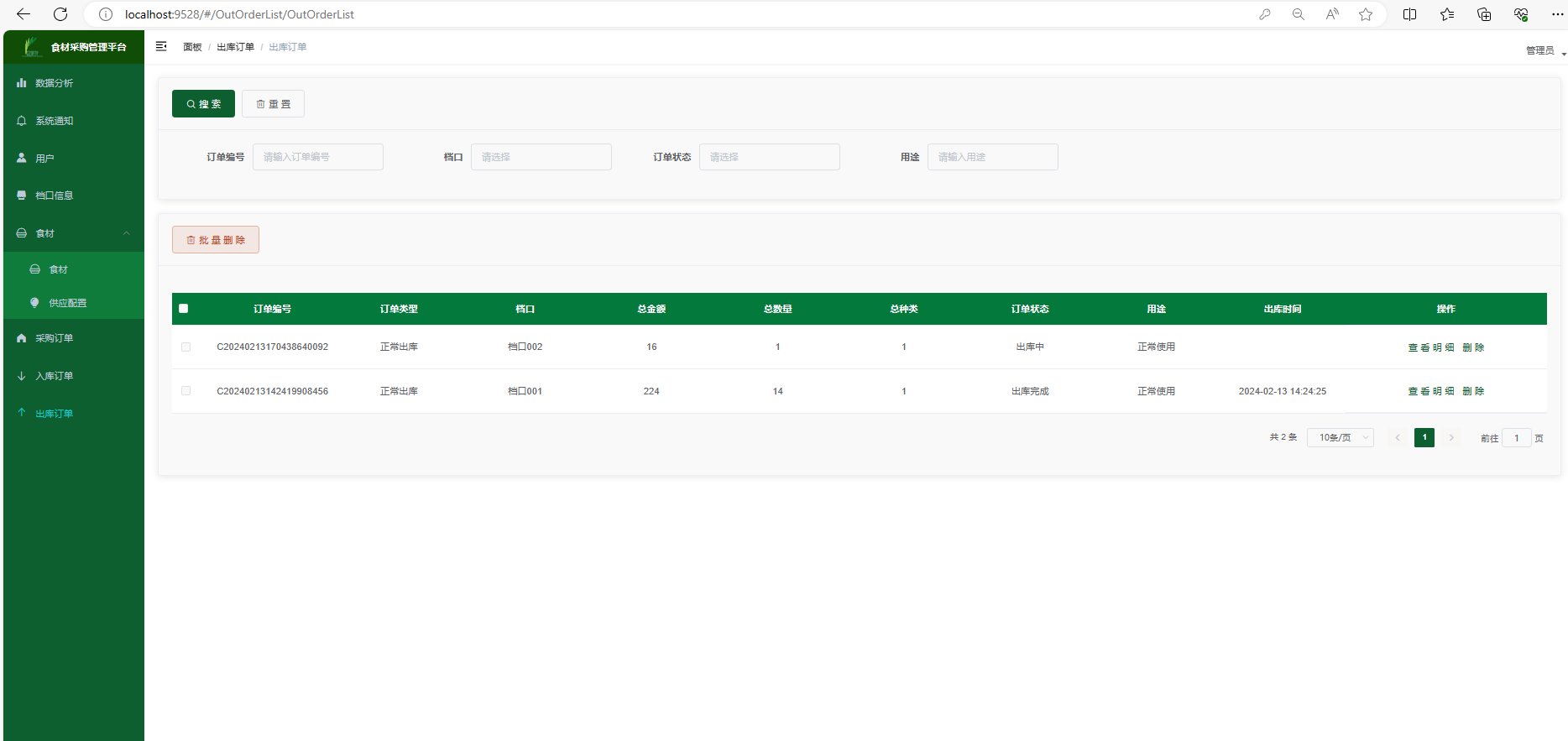1. 智能指针的使用场景分析
下面程序中我们可以看到,new了以后,我们也delete了,但是因为抛异常导,后面的delete没有得到执行,所以就内存泄漏了,所以我们需要new以后捕获异常,捕获到异常后delete内存,再把异常抛出,但是因为new本身也可能抛异常,连续的两个new和下面的Divide都可能会抛异常,让我们处理起来很麻烦。智能指针放到这样的场景里面就让问题简单多了。
double Divide(int a, int b)
{// 当b == 0时抛出异常if (b == 0){throw "Divide by zero condition!";}else{return (double)a / (double)b;}
}void Func()
{// 这⾥可以看到如果发⽣除0错误抛出异常,另外下⾯的array和array2没有得到释放。// 所以这⾥捕获异常后并不处理异常,异常还是交给外⾯处理,这⾥捕获了再重新抛出去。// 但是如果array2new的时候抛异常呢,就还需要套⼀层捕获释放逻辑,这⾥更好解决⽅案// 是智能指针,否则代码太戳了int* array1 = new int[10];int* array2 = new int[10]; // 抛异常呢try{int len, time;cin >> len >> time;cout << Divide(len, time) << endl;}catch (...){cout << "delete []" << array1 << endl;cout << "delete []" << array2 << endl;delete[] array1;delete[] array2;throw; // 异常重新抛出,捕获到什么抛出什么}// ...cout << "delete []" << array1 << endl;delete[] array1;cout << "delete []" << array2 << endl;delete[] array2;
}int main()
{try{Func();}catch (const char* errmsg){cout << errmsg << endl;}catch (const exception& e){cout << e.what() << endl;}catch (...){cout << "未知异常" << endl;}return 0;
}2. RAII和智能指针的设计思路
- RAII是Resource Acquisition Is Initialization的缩写,他是⼀种管理资源的类的设计思想,本质是⼀种利⽤对象⽣命周期来管理获取到的动态资源,避免资源泄漏,这⾥的资源可以是内存、⽂件指针、⽹络连接、互斥锁等等。RAII在获取资源时把资源委托给⼀个对象,接着控制对资源的访问,资源在对象的生命周期内始终保持有效,最后在对象析构的时候释放资源,这样保障了资源的正常释放,避免资源泄漏问题。
- 智能指针类除了满足RAII的设计思路,还要方便资源的访问,所以智能指针类还会想迭代器类⼀样,重载 operator*/operator->/operator[] 等运算符,方便访问资源。
template<class T>
class SmartPtr
{
public:// RAIISmartPtr(T* ptr):_ptr(ptr){}~SmartPtr(){cout << "delete[] " << _ptr << endl;delete[] _ptr;}// 重载运算符,模拟指针的⾏为,⽅便访问资源T& operator*(){return *_ptr;}T* operator->(){return _ptr;}T& operator[](size_t i){return _ptr[i];}
private:T* _ptr;
};double Divide(int a, int b)
{// 当b == 0时抛出异常if (b == 0){throw "Divide by zero condition!";}else{return (double)a / (double)b;}
}void Func()
{// 这⾥使⽤RAII的智能指针类管理new出来的数组以后,程序简单多了SmartPtr<int> sp1 = new int[10];SmartPtr<int> sp2 = new int[10];for (size_t i = 0; i < 10; i++){sp1[i] = sp2[i] = i;}int len, time;cin >> len >> time;cout << Divide(len, time) << endl;
}int main()
{try{Func();}catch (const char* errmsg){cout << errmsg << endl;}catch (const exception& e){cout << e.what() << endl;}catch (...){cout << "未知异常" << endl;}return 0;
}3. C++标准库智能指针的使用
- C++标准库中的智能指针都在<memory>这个头⽂件下⾯,我们包含<memory>就可以是使⽤了,智能指针有好⼏种,除了weak_ptr他们都符合RAII和像指针⼀样访问的⾏为,原理上⽽⾔主要是解决智能指针拷⻉时的思路不同。
- auto_ptr是C++98时设计出来的智能指针,他的特点是拷⻉时把被拷⻉对象的资源的管理权转移给拷⻉对象,这是⼀个⾮常糟糕的设计,因为他会到被拷⻉对象悬空,访问报错的问题,C++11设计出新的智能指针后,强烈建议不要使⽤auto_ptr。其他C++11出来之前很多公司也是明令禁⽌使⽤这个智能指针的。
- unique_ptr是C++11设计出来的智能指针,他的名字翻译出来是唯⼀指针,他的特点的不⽀持拷⻉,只⽀持移动。如果不需要拷⻉的场景就⾮常建议使⽤他。
- shared_ptr是C++11设计出来的智能指针,他的名字翻译出来是共享指针,他的特点是⽀持拷⻉,也⽀持移动。如果需要拷⻉的场景就需要使⽤他了。底层是⽤引⽤计数的⽅式实现的。
- weak_ptr是C++11设计出来的智能指针,他的名字翻译出来是弱指针,他完全不同于上⾯的智能指针,他不⽀持RAII,也就意味着不能⽤它直接管理资源,weak_ptr的产⽣本质是要解决shared_pt的⼀个循环引用导致内存泄漏的问题。具体细节下⾯我们再细讲。
- 智能指针析构时默认是进行delete释放资源,这也就意味着如果不是new出来的资源,交给智能指针管理,析构时就会崩溃。智能指针⽀持在构造时给⼀个删除器,所谓删除器本质就是⼀个可调⽤对象,这个可调⽤对象中实现你想要的释放资源的⽅式,当构造智能指针时,给了定制的删除器,在智能指针析构时就会调⽤删除器去释放资源。因为new[]经常使用,所以为了简洁⼀点,
- unique_ptr和shared_ptr都特化了⼀份[]的版本,使用时 unique_ptr<Date[]> up1(new Date[5]);shared_ptr<Date[]> sp1(new Date[5]); 就可以管理new []的资源。
- template <class T, class... Args> shared_ptr<T> make_shared (Args&&... args);
- shared_ptr 除了⽀持⽤指向资源的指针构造,还⽀持 make_shared 用初始化资源对象的值直接构造。
- shared_ptr 和 unique_ptr 都⽀持了operator bool的类型转换,如果智能指针对象是⼀个空对象没有管理资源,则返回false,否则返回true,意味着我们可以直接把智能指针对象给if判断是否为空。
- shared_ptr 和 unique_ptr 都得构造函数都使⽤explicit 修饰,防止普通指针隐式类型转换成智能指针对象。
struct Date
{int _year;int _month;int _day;Date(int year = 1, int month = 1, int day = 1):_year(year),_month(month),_day(day){}~Date(){cout << "~Date()" << endl;}
};int main()
{auto_ptr<Date> ap1(new Date);// 拷⻉时,管理权限转移,被拷⻉对象ap1悬空auto_ptr<Date> ap2(ap1);// 空指针访问,ap1对象已经悬空//ap1->_year++;unique_ptr<Date> up1(new Date);// 不⽀持拷⻉//unique_ptr<Date> up2(up1);// ⽀持移动,但是移动后up1也悬空,所以使⽤移动要谨慎unique_ptr<Date> up3(move(up1));shared_ptr<Date> sp1(new Date);// ⽀持拷⻉shared_ptr<Date> sp2(sp1);shared_ptr<Date> sp3(sp2);cout << sp1.use_count() << endl;sp1->_year++;cout << sp1->_year << endl;cout << sp2->_year << endl;cout << sp3->_year << endl;// ⽀持移动,但是移动后sp1也悬空,所以使⽤移动要谨慎shared_ptr<Date> sp4(move(sp1));return 0;
}template<class T>
void DeleteArrayFunc(T* ptr)
{delete[] ptr;
}template<class T>
class DeleteArray
{
public:void operator()(T* ptr){delete[] ptr;}
};class Fclose
{
public:void operator()(FILE* ptr){cout << "fclose:" << ptr << endl;fclose(ptr);}
};int main()
{// 这样实现程序会崩溃// unique_ptr<Date> up1(new Date[10]);// shared_ptr<Date> sp1(new Date[10]);// 解决⽅案1// 因为new[]经常使⽤,所以unique_ptr和shared_ptr// 实现了⼀个特化版本,这个特化版本析构时⽤的delete[]unique_ptr<Date[]> up1(new Date[5]);shared_ptr<Date[]> sp1(new Date[5]);// 解决⽅案2// 仿函数对象做删除器//unique_ptr<Date, DeleteArray<Date>> up2(new Date[5], DeleteArray<Date>());// unique_ptr和shared_ptr⽀持删除器的⽅式有所不同// unique_ptr是在类模板参数⽀持的,shared_ptr是构造函数参数⽀持的// 这⾥没有使⽤相同的⽅式还是挺坑的// 使⽤仿函数unique_ptr可以不在构造函数传递,因为仿函数类型构造的对象直接就可以调⽤// 但是下⾯的函数指针和lambda的类型不可以unique_ptr<Date, DeleteArray<Date>> up2(new Date[5]);shared_ptr<Date> sp2(new Date[5], DeleteArray<Date>());// 函数指针做删除器unique_ptr<Date, void(*)(Date*)> up3(new Date[5], DeleteArrayFunc<Date>);shared_ptr<Date> sp3(new Date[5], DeleteArrayFunc<Date>);// lambda表达式做删除器auto delArrOBJ = [](Date* ptr) {delete[] ptr; };unique_ptr<Date, decltype(delArrOBJ)> up4(new Date[5], delArrOBJ);shared_ptr<Date> sp4(new Date[5], delArrOBJ);// 实现其他资源管理的删除器shared_ptr<FILE> sp5(fopen("Test.cpp", "r"), Fclose());shared_ptr<FILE> sp6(fopen("Test.cpp", "r"), [](FILE* ptr) {cout << "fclose:" << ptr << endl;fclose(ptr);});return 0;
}int main()
{shared_ptr<Date> sp1(new Date(2024, 9, 11));shared_ptr<Date> sp2 = make_shared<Date>(2024, 9, 11);auto sp3 = make_shared<Date>(2024, 9, 11);shared_ptr<Date> sp4;// if (sp1.operator bool())if (sp1)cout << "sp1 is not nullptr" << endl;if (!sp4)cout << "sp1 is nullptr" << endl;// 报错shared_ptr<Date> sp5 = new Date(2024, 9, 11);unique_ptr<Date> sp6 = new Date(2024, 9, 11);return 0;
}4. 智能指针的原理
- 下面我们模拟实现了auto_ptr和unique_ptr的核心功能,这两个智能指针的实现比较简单,大家了解⼀下原理即可。auto_ptr的思路是拷贝时转移资源管理权给被拷贝对象,这种思路是不被认可的,也不建议使⽤。unique_ptr的思路是不支持拷贝。
- 大家重点要看看shared_ptr是如何设计的,尤其是引用计数的设计,主要这⾥⼀份资源就需要⼀个 引用计数,所以引用计数才用静态成员的方式是无法实现的,要使⽤堆上动态开辟的⽅式,构造智能指针对象时来⼀份资源,就要new⼀个引用计数出来。多个shared_ptr指向资源时就++引用计数,shared_ptr对象析构时就引⽤计数,引⽤计数减到0时代表当前析构的shared_ptr是最后⼀个管理资源的对象,则析构资源。

namespace bit
{template<class T>class auto_ptr{public:auto_ptr(T* ptr):_ptr(ptr){}auto_ptr(auto_ptr<T>& sp):_ptr(sp._ptr){// 管理权转移sp._ptr = nullptr;}auto_ptr<T>& operator=(auto_ptr<T>& ap){// 检测是否为⾃⼰给⾃⼰赋值if (this != &ap){// 释放当前对象中资源if (_ptr)delete _ptr;// 转移ap中资源到当前对象中_ptr = ap._ptr;ap._ptr = NULL;}return *this;}~auto_ptr(){if (_ptr){cout << "delete:" << _ptr << endl;delete _ptr;}}// 像指针⼀样使⽤T& operator*(){return *_ptr;}T* operator->(){return _ptr;}private:T* _ptr;};template<class T>class unique_ptr{public:explicit unique_ptr(T* ptr):_ptr(ptr){}~unique_ptr(){if (_ptr){cout << "delete:" << _ptr << endl;delete _ptr;}}// 像指针⼀样使⽤T& operator*(){return *_ptr;}T* operator->(){return _ptr;}unique_ptr(const unique_ptr<T>& sp) = delete;unique_ptr<T>& operator=(const unique_ptr<T>& sp) = delete;unique_ptr(unique_ptr<T>&& sp):_ptr(sp._ptr){sp._ptr = nullptr;}unique_ptr<T>& operator=(unique_ptr<T>&& sp){delete _ptr;_ptr = sp._ptr;sp._ptr = nullptr;}private:T* _ptr;};template<class T>class shared_ptr{public:explicit shared_ptr(T* ptr = nullptr): _ptr(ptr), _pcount(new int(1)){}template<class D>shared_ptr(T* ptr, D del): _ptr(ptr), _pcount(new int(1)), _del(del){}shared_ptr(const shared_ptr<T>& sp):_ptr(sp._ptr), _pcount(sp._pcount),_del(sp._del){++(*_pcount);}void release(){if (--(*_pcount) == 0){// 最后⼀个管理的对象,释放资源_del(_ptr);delete _pcount;_ptr = nullptr;_pcount = nullptr;}}shared_ptr<T>& operator=(const shared_ptr<T>& sp){if (_ptr != sp._ptr){release();_ptr = sp._ptr;_pcount = sp._pcount;++(*_pcount);_del = sp._del;}return *this;}~shared_ptr(){release();}T* get() const{return _ptr;}int use_count() const{return *_pcount;}T& operator*(){return *_ptr;}T* operator->(){return _ptr;}
private:T* _ptr;int* _pcount;//atomic<int>* _pcount;function<void(T*)> _del = [](T* ptr) {delete ptr; };
};// 需要注意的是我们这⾥实现的shared_ptr和weak_ptr都是以最简洁的⽅式实现的,// 只能满⾜基本的功能,这⾥的weak_ptr lock等功能是⽆法实现的,想要实现就要// 把shared_ptr和weak_ptr⼀起改了,把引⽤计数拿出来放到⼀个单独类型,shared_ptr// 和weak_ptr都要存储指向这个类的对象才能实现,有兴趣可以去翻翻源代码template<class T>class weak_ptr{public:weak_ptr(){}weak_ptr(const shared_ptr<T>& sp):_ptr(sp.get()){}weak_ptr<T>& operator=(const shared_ptr<T>& sp){_ptr = sp.get();return *this;}private:T* _ptr = nullptr;};
}int main()
{bit::auto_ptr<Date> ap1(new Date);// 拷⻉时,管理权限转移,被拷⻉对象ap1悬空bit::auto_ptr<Date> ap2(ap1);// 空指针访问,ap1对象已经悬空//ap1->_year++;bit::unique_ptr<Date> up1(new Date);// 不⽀持拷⻉//unique_ptr<Date> up2(up1);// ⽀持移动,但是移动后up1也悬空,所以使⽤移动要谨慎bit::unique_ptr<Date> up3(move(up1));bit::shared_ptr<Date> sp1(new Date);// ⽀持拷⻉bit::shared_ptr<Date> sp2(sp1);bit::shared_ptr<Date> sp3(sp2);cout << sp1.use_count() << endl;sp1->_year++;cout << sp1->_year << endl;cout << sp2->_year << endl;cout << sp3->_year << endl;return 0;
}这篇文章介绍了智能指针的相关知识,下篇我们继续讨论智能指针,欢迎评论交流!





![[ Linux 命令基础 4 ] Linux 命令详解-文本处理命令](https://i-blog.csdnimg.cn/direct/b0e154d62a584372ade0c70e4bf70031.png)













